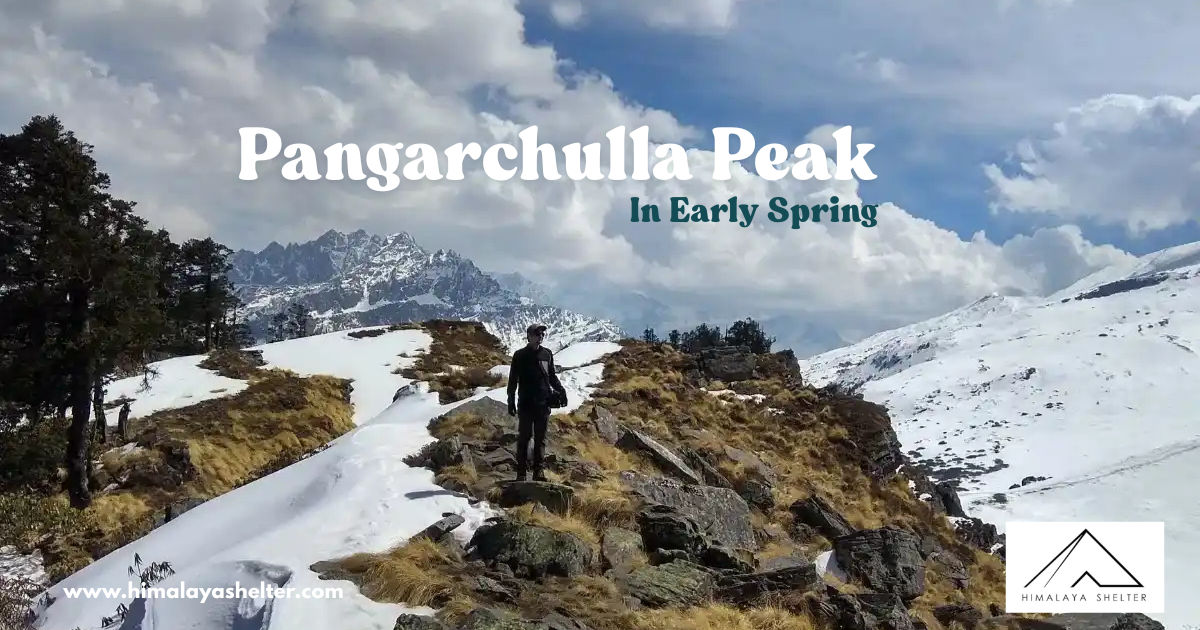Drive: 10 km, 30 mins
Trek: 6 km, 5 hrs
Altitude: 6,200 ft (1,890 m) – 6,857 ft (2,090 m) – 9,373 ft (2,857 m)
Accommodation: Camping (Alpine tents)
Meals: Breakfast + Lunch + Evening Snacks + Dinner
The day is not long today. So there’s no need to wake up early. After a hearty breakfast, you go. Please be aware that today’s breakfast is not covered by the cost, therefore participants will need to make other arrangements for food. Joshimath serves as a hub for several locations in the area, including the Valley of Flowers, Hemkund Sahib, and even the Badrinath Temple. That is to say, it receives a lot of visitors and, as a result, has plenty of amenities.
After breakfast, you put our packed rucksacks into a vehicle and drove us to Dhaka, where our trip would begin.
You may leave your extra luggage in the guest house, so keep your packs light and only bring what you need for the walk. Joshimath is around 10 kilometres from Dhaka, and the trip there shouldn’t take more than 30 minutes. The drive is brief yet beautiful. From the beginning, titans surround you. After 20 minutes of driving, you can see Nanda Devi, the second-highest mountain in India after Kanchenjunga, unhindered to your left and Pangarchulla’s crown perched above a dense pine forest to your right.
Reaching Dhak takes roughly 30 minutes. You’ll begin your journey here. The first 30 minutes of the hike are spent ascending on a motorable road, following which you get off the road and go up the mountain on a stone-paved route. The ascent is moderate and steady. Despite being primarily stone-paved, there are still areas of the route that are narrow and unstable, so you must go with utmost caution. Today’s walk is rather straightforward, similar to a stroll in the garden, but in the shade of the shrubs and amid the bleating of the calves. You will acquire close to 800M overall today. Therefore, the stroll across the park now includes a modest elevation, of course!
What you see as strewn colours on the mountainsides are the brightly painted house walls of the numerous mountain towns that perilously perch on these treacherous slopes. You can get a glimpse of the many peculiarities of mountain living on the trail as it travels through the villages of Kharchi and Upper Tugashi. These peculiarities range from the structure of the houses built to support their lifestyle to the numerous sources of income and their close ties to and dependence on nature. A fantastic illustration of the mountain people’s strong relationship with the environment and their uncanny capacity to cohabit with other natural forms in a spirit of support rather than exploitation are the hydro-powered mills that may be seen in the settlements.
Now, other peaks are being added to the mix. While Pangarchulla plays hide and seek at each curve of the route, Dhonagiri maintains a prominent position the entire time. You also start to notice additional well-known peaks; remember to keep asking your local trek guides for their names. The trek’s entire route passes through Nanda Devi National Park. Since it is a protected region, remember to show respect for both the surroundings and the locals.
You reach the next settlement after a section of severe ascent that lasts for two and a half hours. On the route, there are plenty of water sources. The communities also offer wide-ranging vistas of step farming, so you can get a sense of the area’s resilient environment. To get to the next settlement, which is dangerously perched on the precarious ledges of the mountain face, you must traverse these terraced plains. You begin to put some distance between yourself and any indication after crossing Upper Tugashi. You enter the forest, which is home to pine and walnut trees as well as golden and black oaks.
Inquire about the tree whose bark is used to produce butter tea; butter tea is a local delicacy throughout the winter and is another example of utilizing nature to one’s advantage. The last section of the path for today is a gentle ascent. Guling, you are now quite close to the campground. You’ll be there just in time for a hot meal. The greatest views of the Garhwal range may be seen from the vast open field known as Guling Top. It’s an amazing experience to see the sun chase after these peaks twice a day.
The entire environment serves to calm you down. The trees’ hues of red, green, and yellow contrast with the five dozen different shades of brown, the white of the summits, and the sun, which teases the skies by changing their colour every second as evening approaches.
After a hearty meal, take a moment to relax before feasting your eyes on the wonders that are being revealed to you as the day draws to a close. You take a little acclimatization stroll in the evening and return to camp before it gets dark because you have climbed quite a bit of altitude today.




























